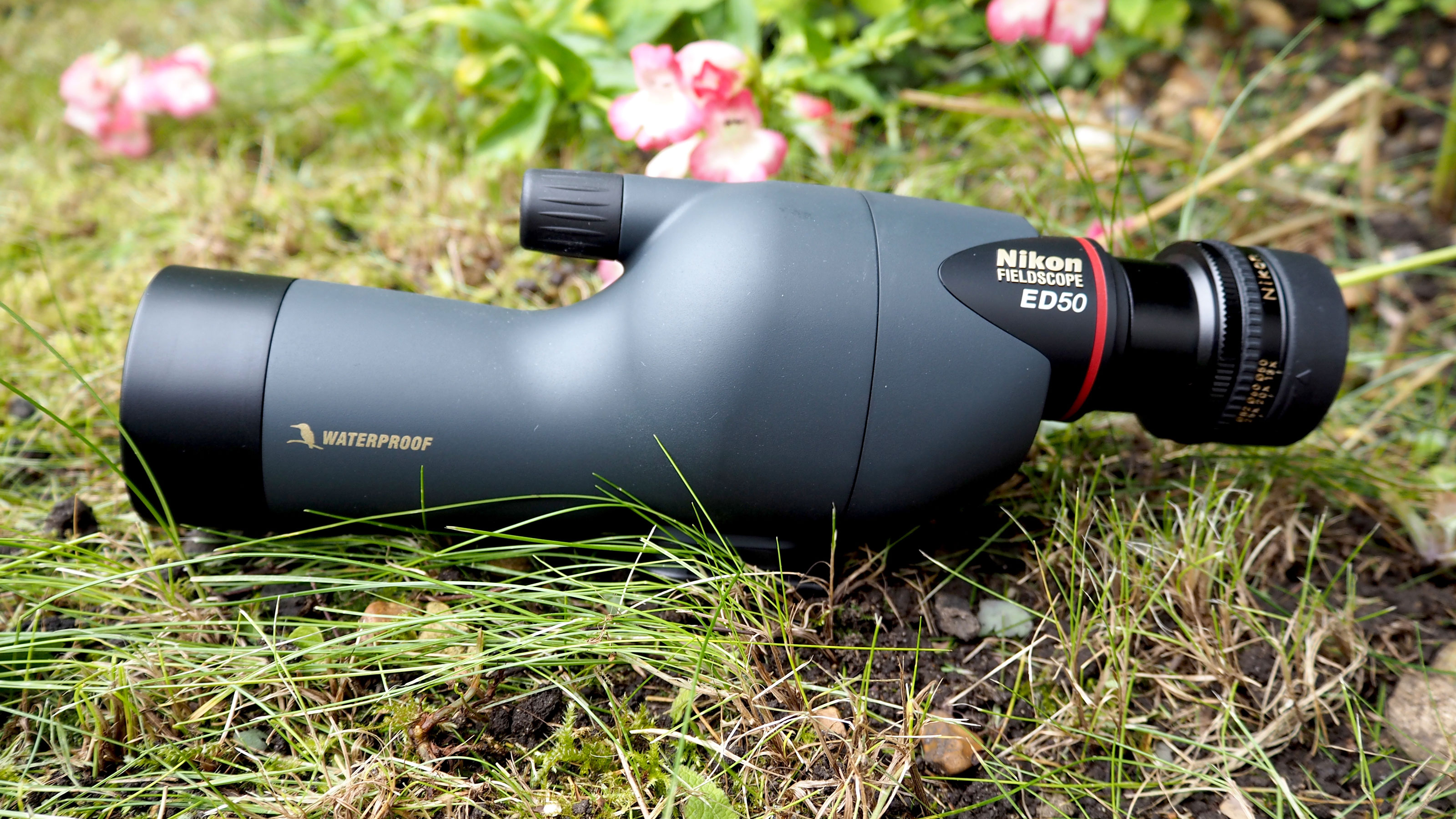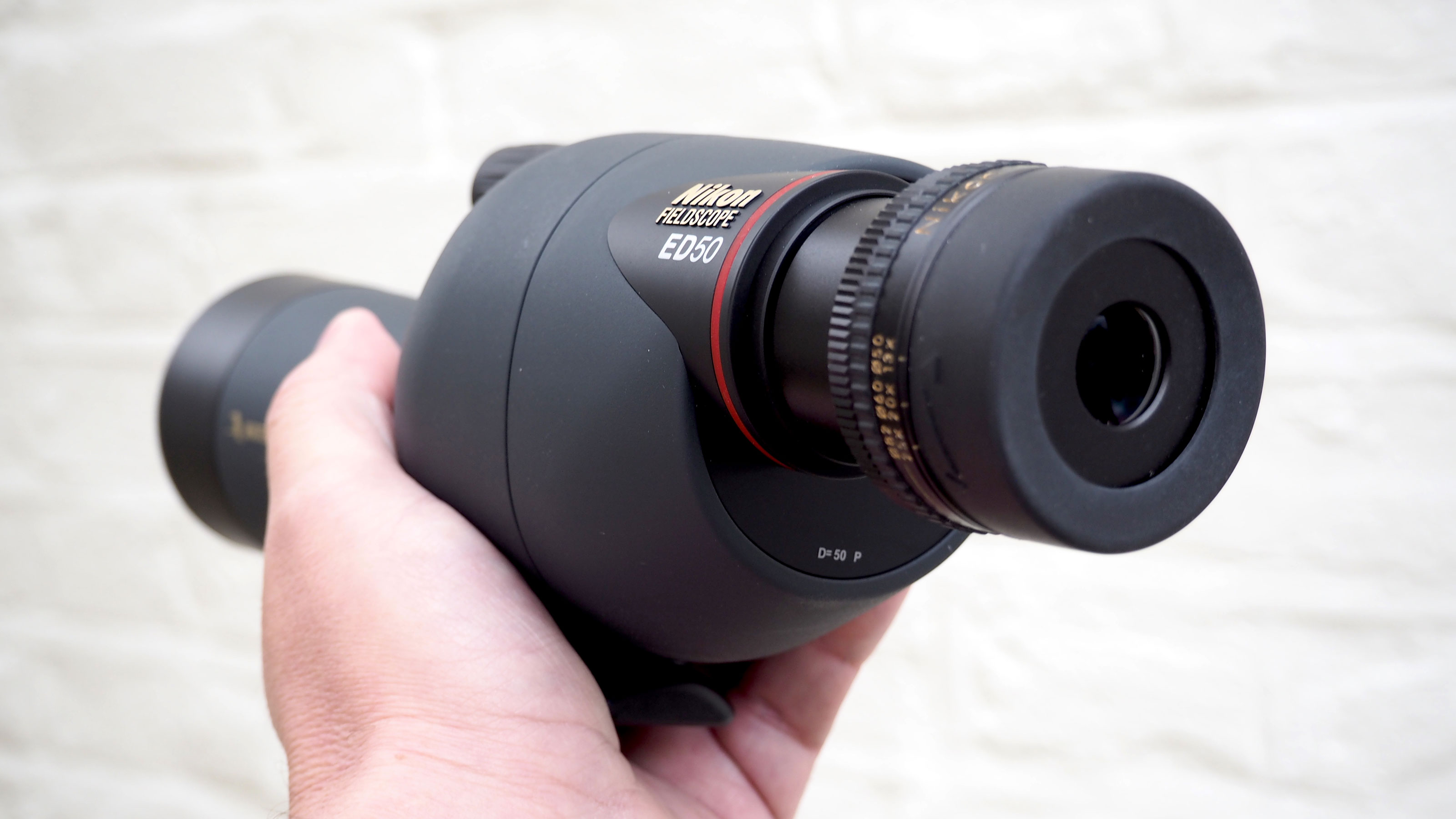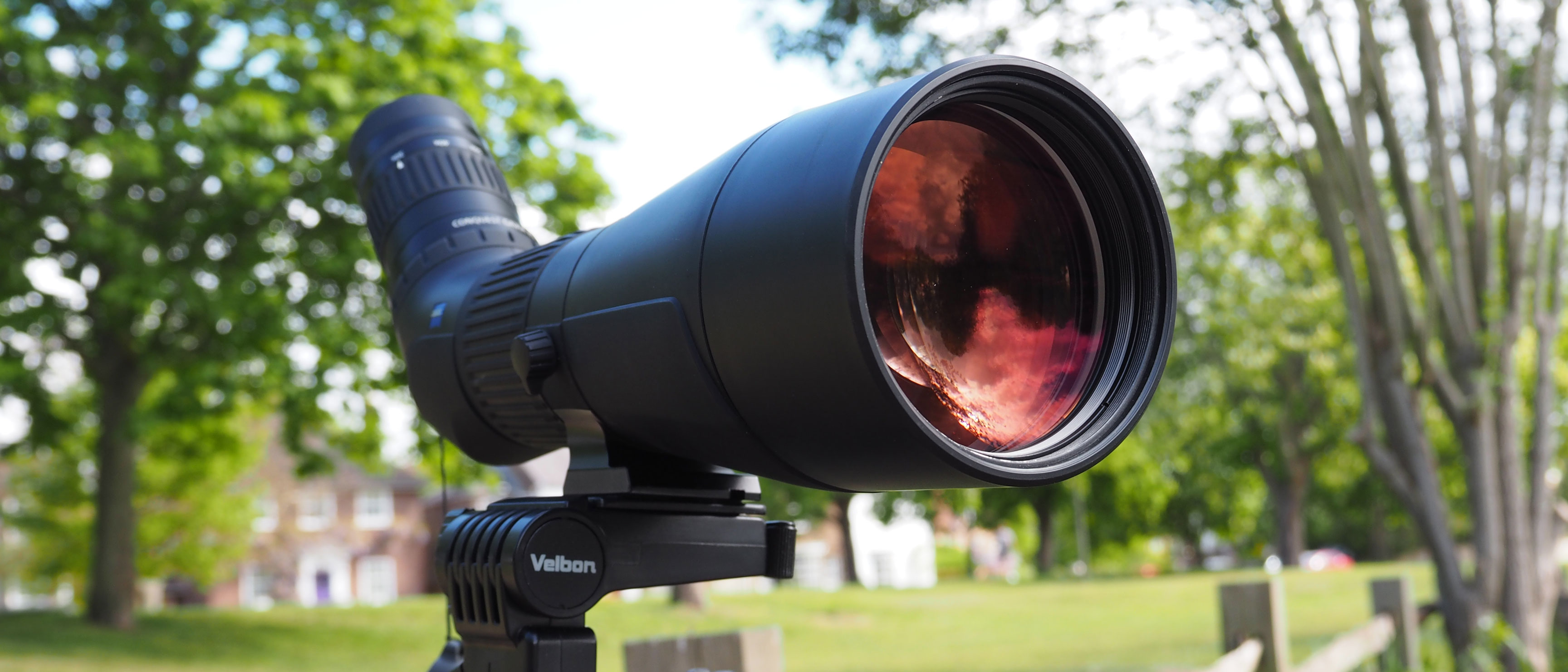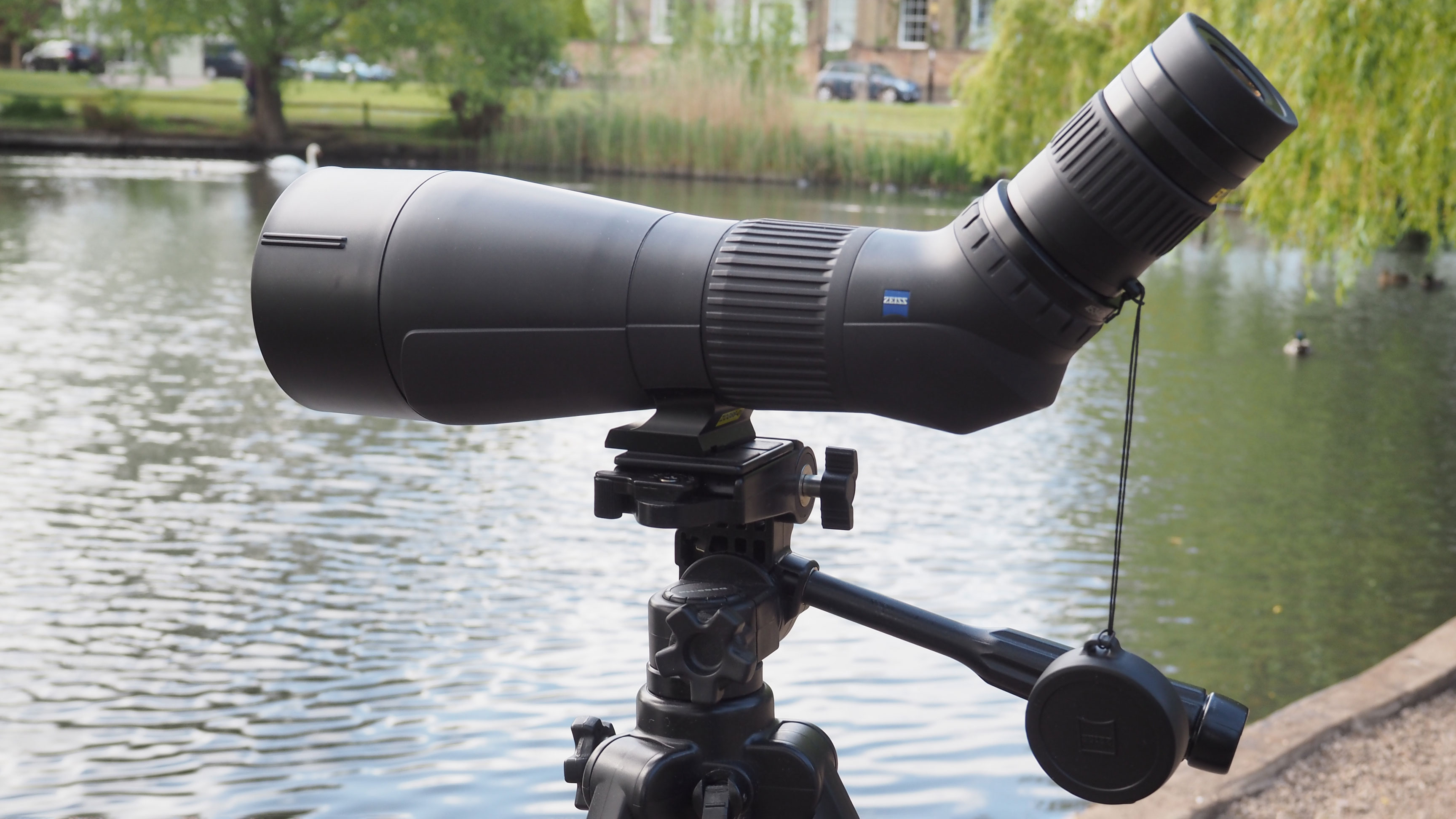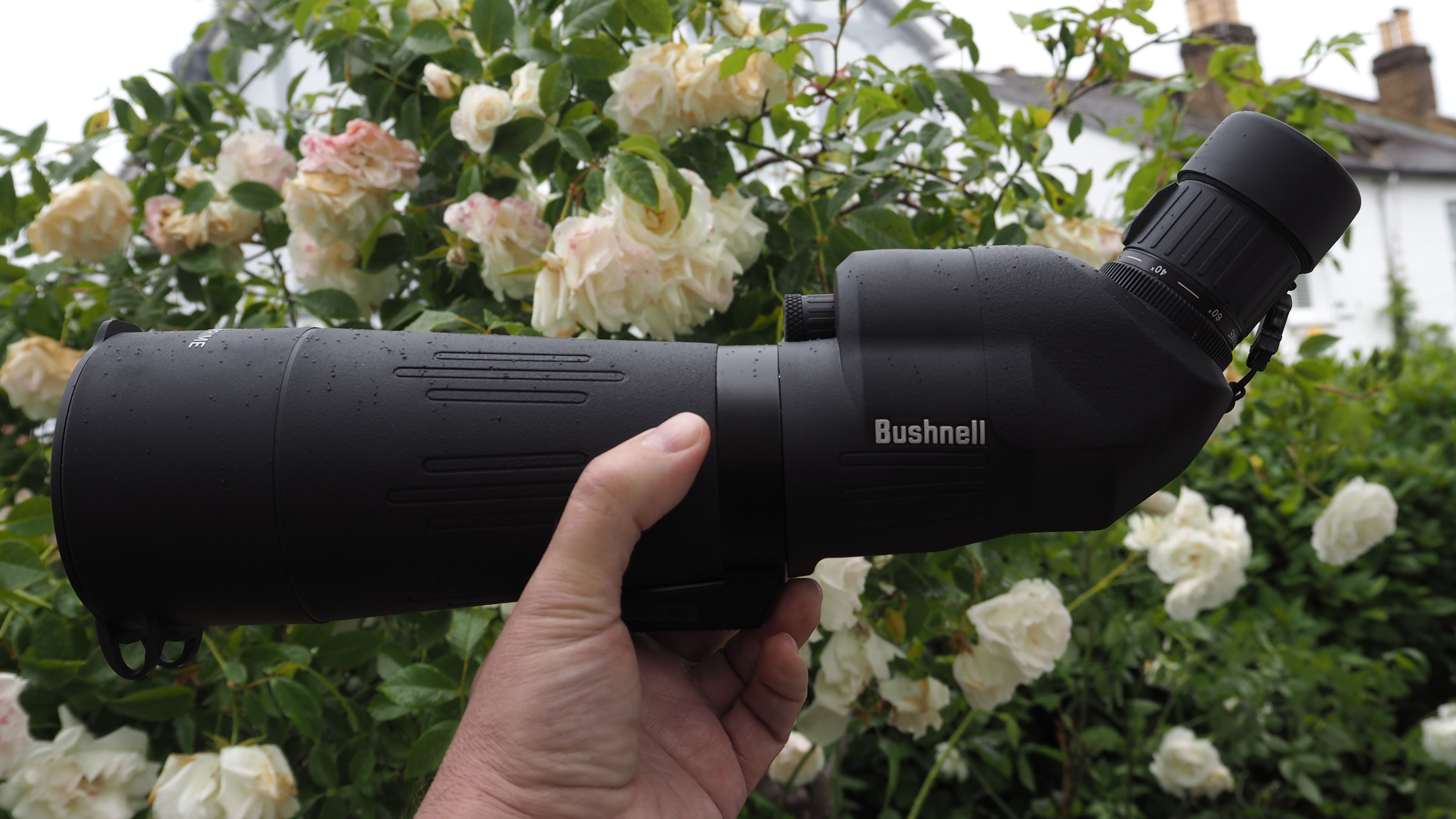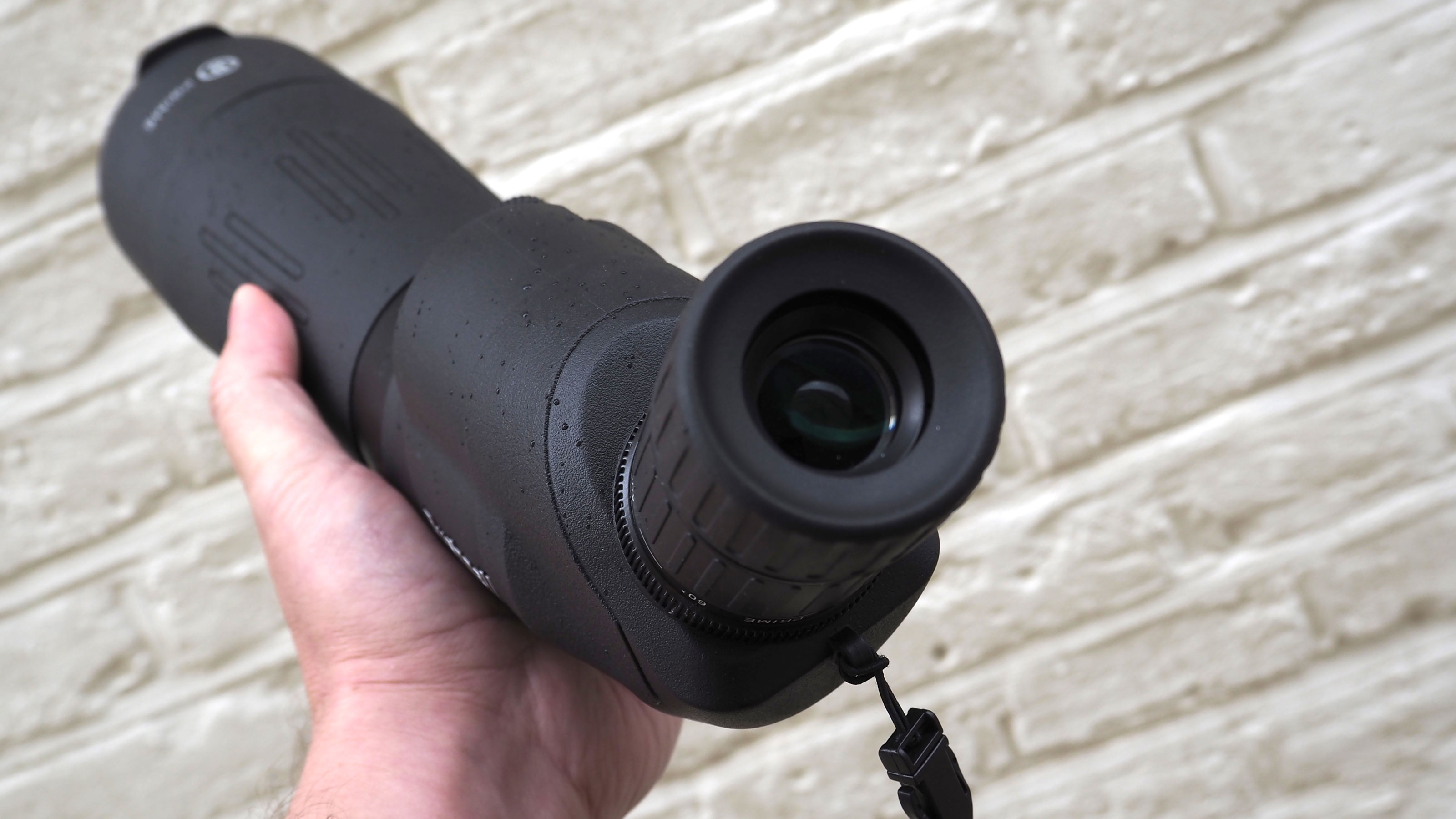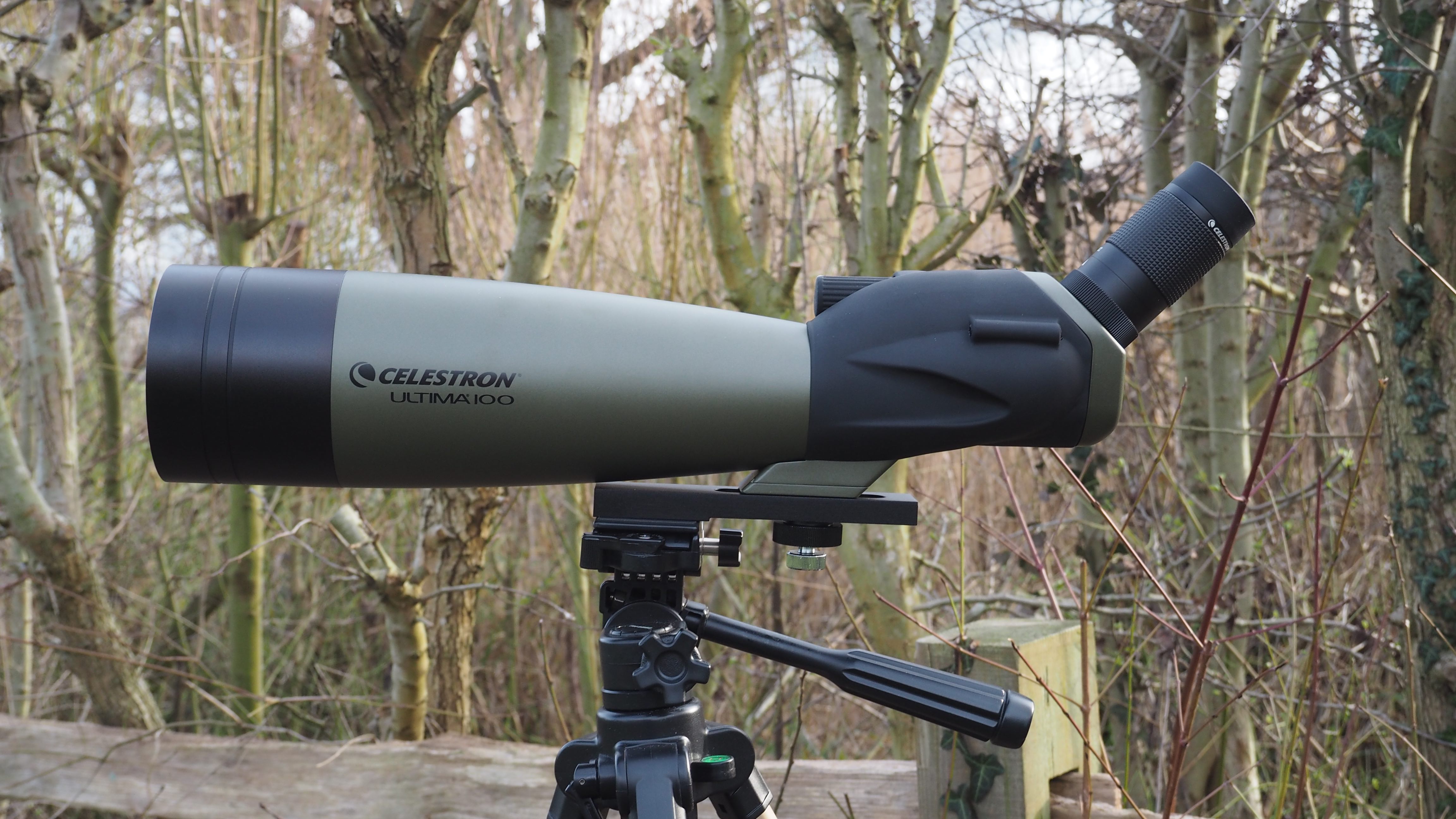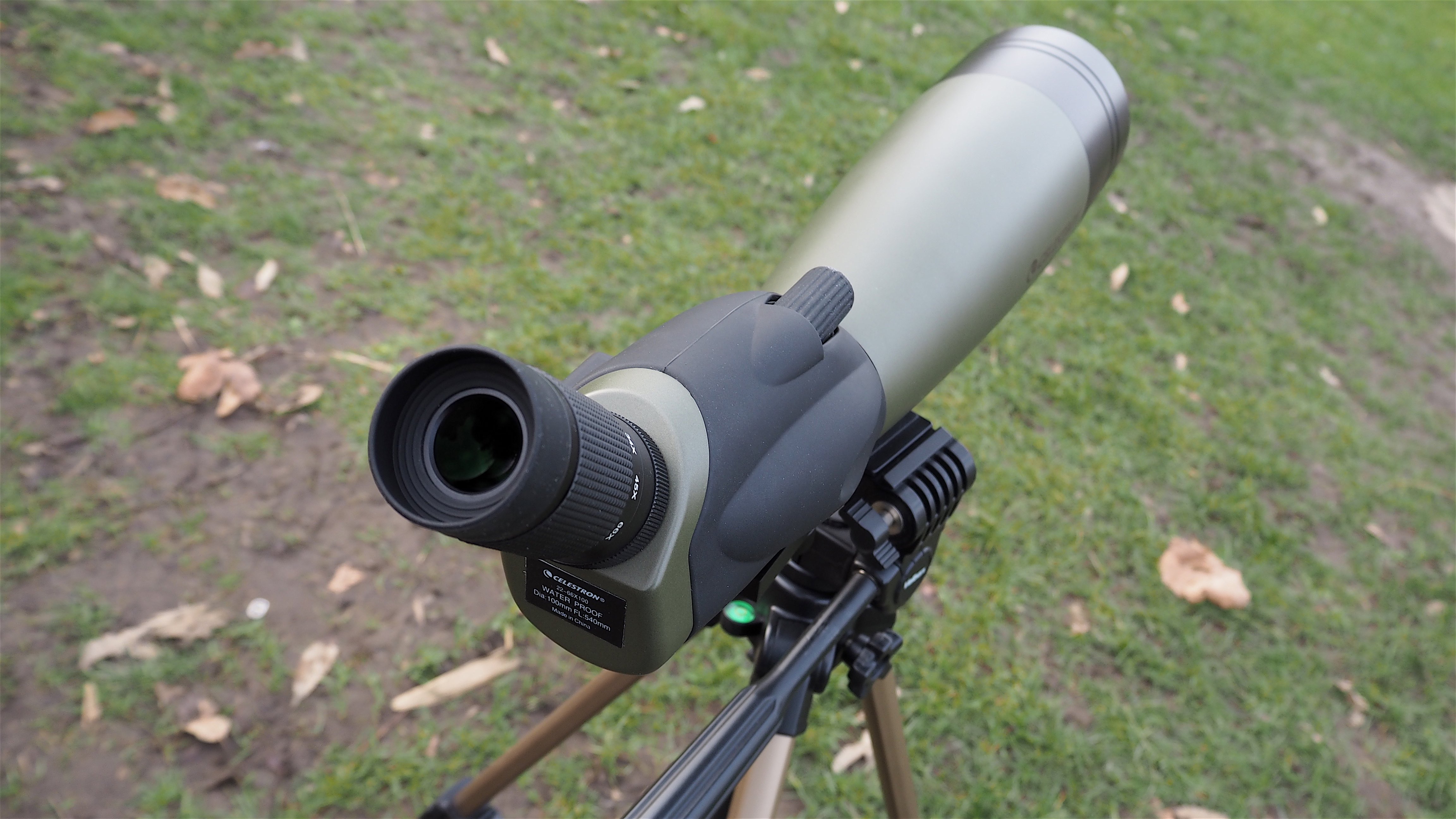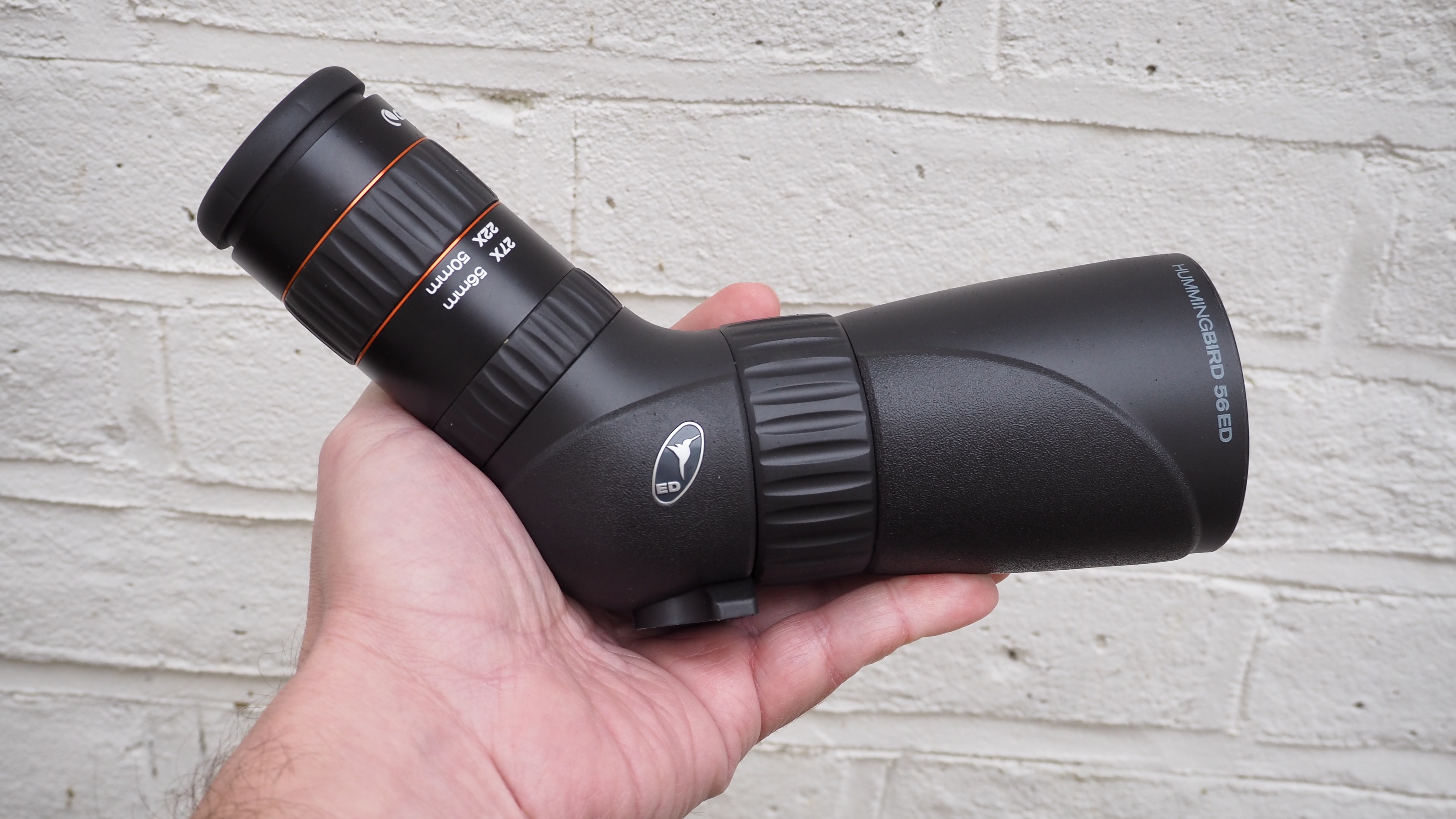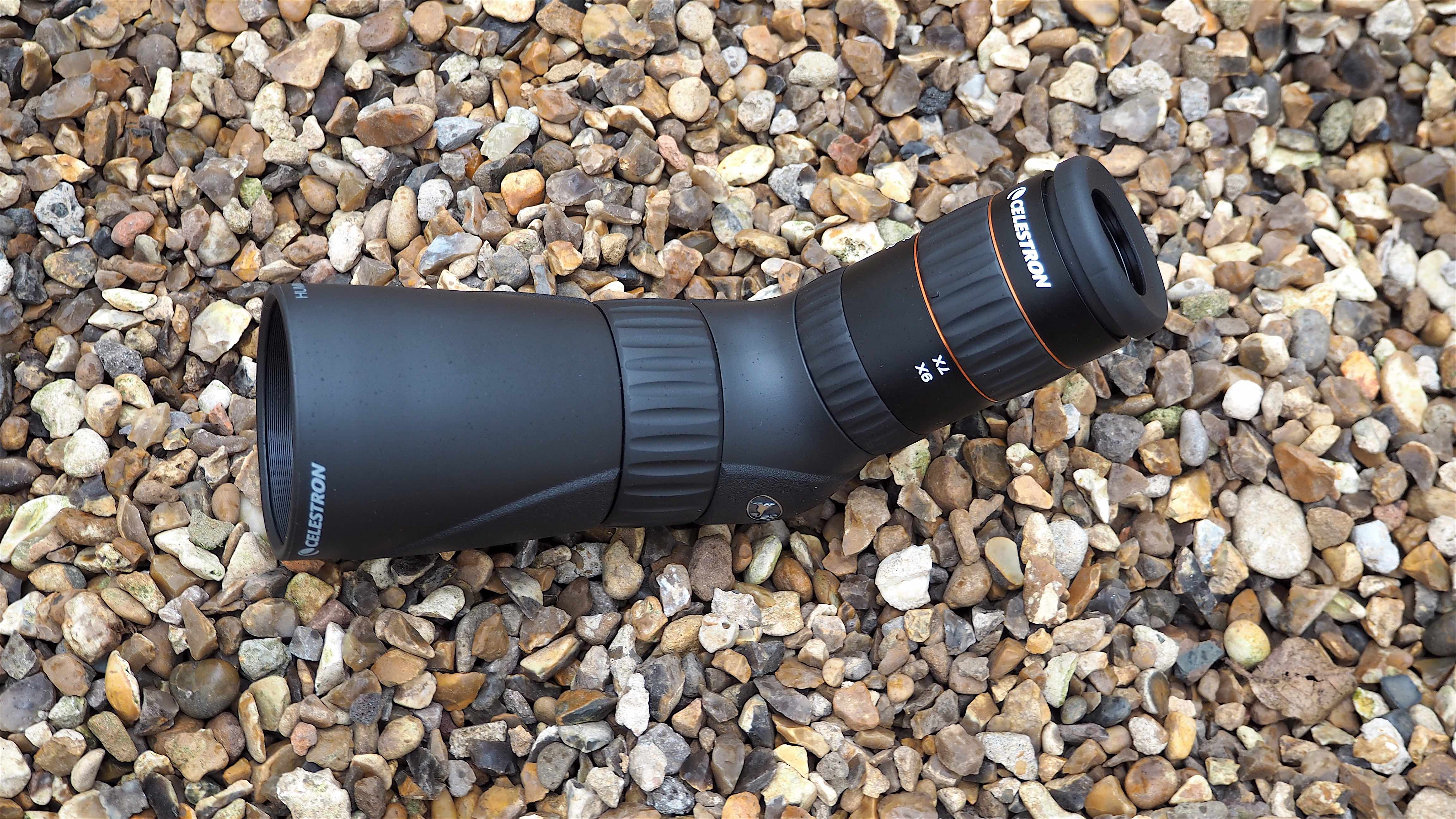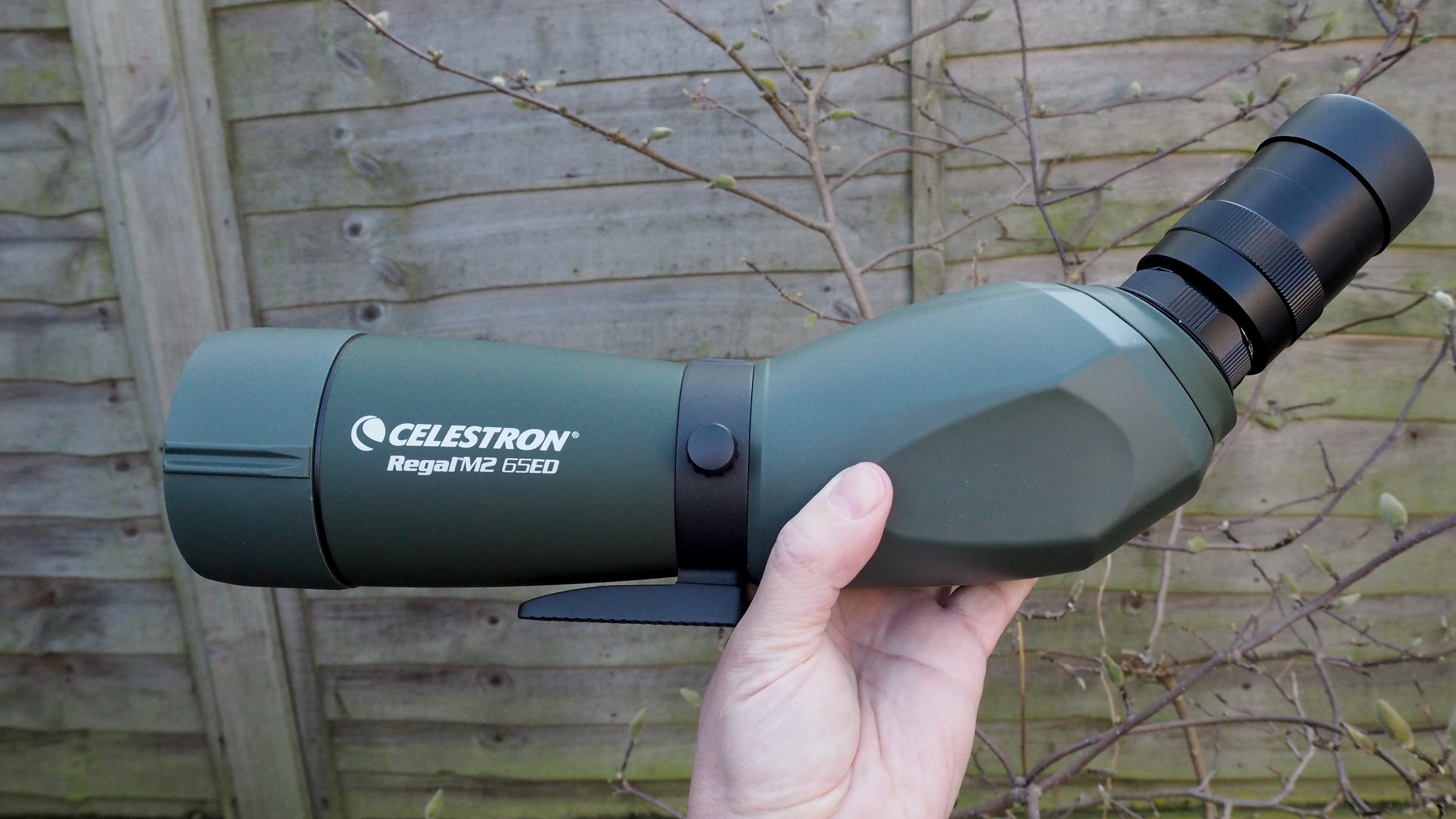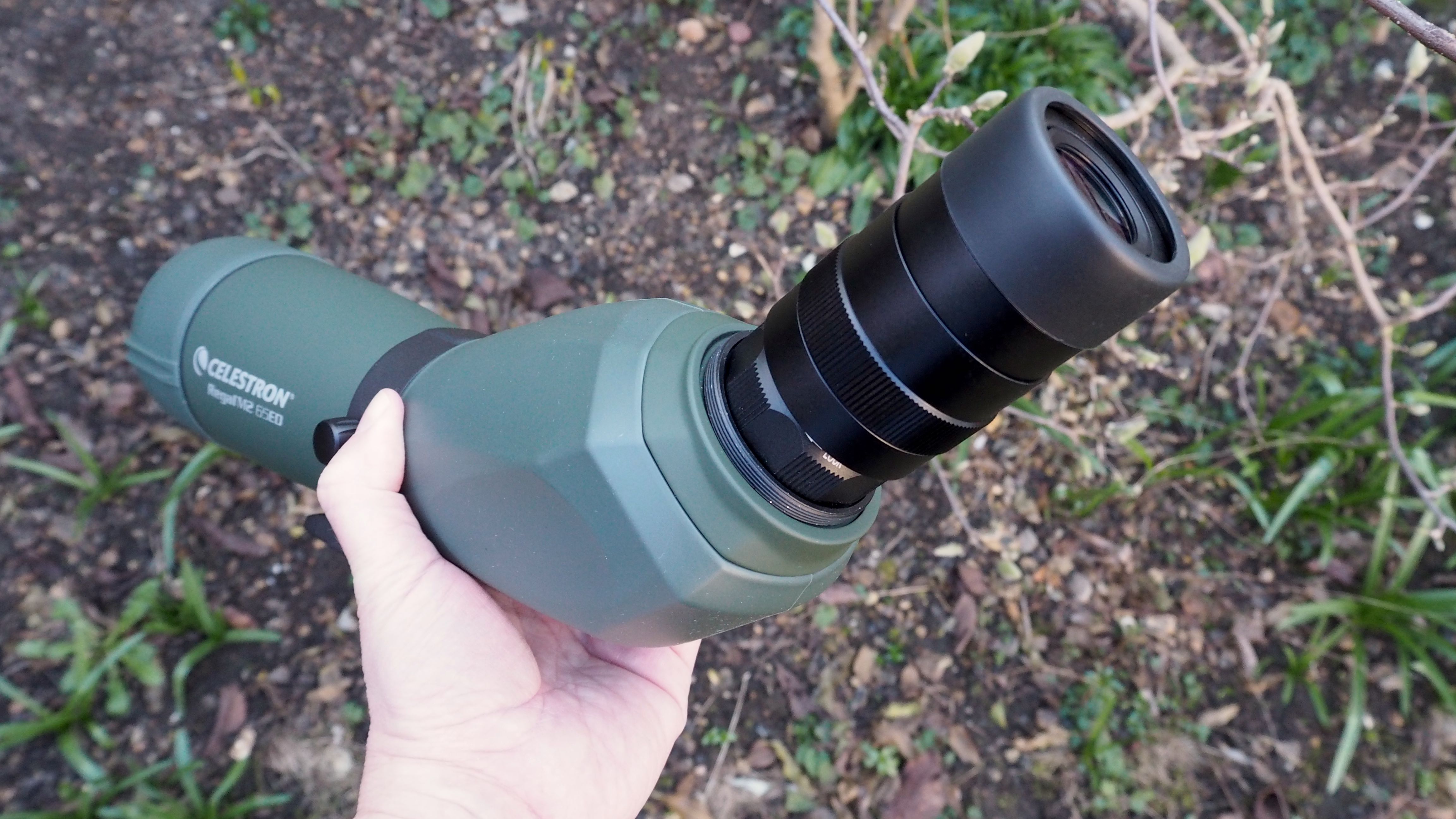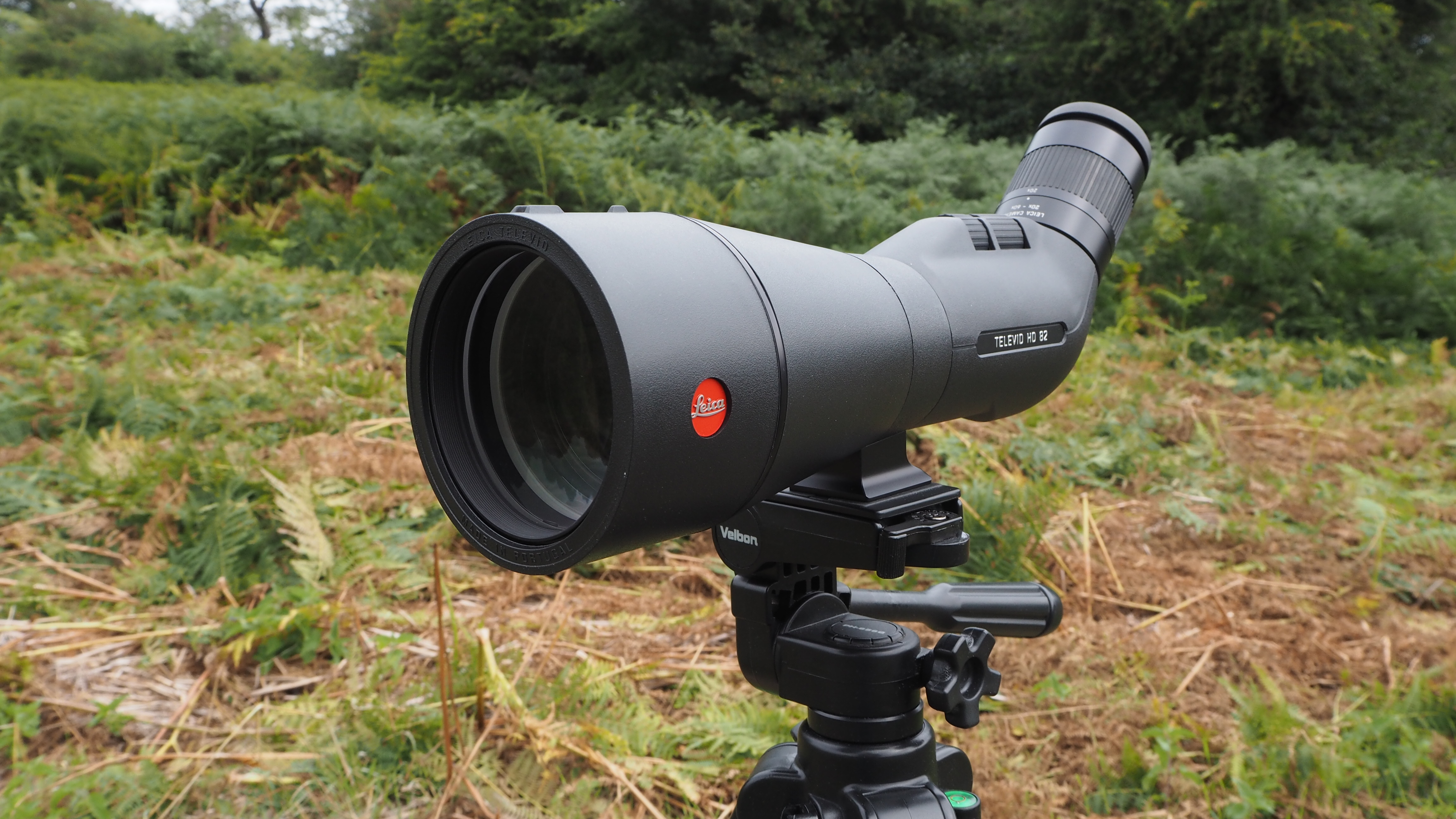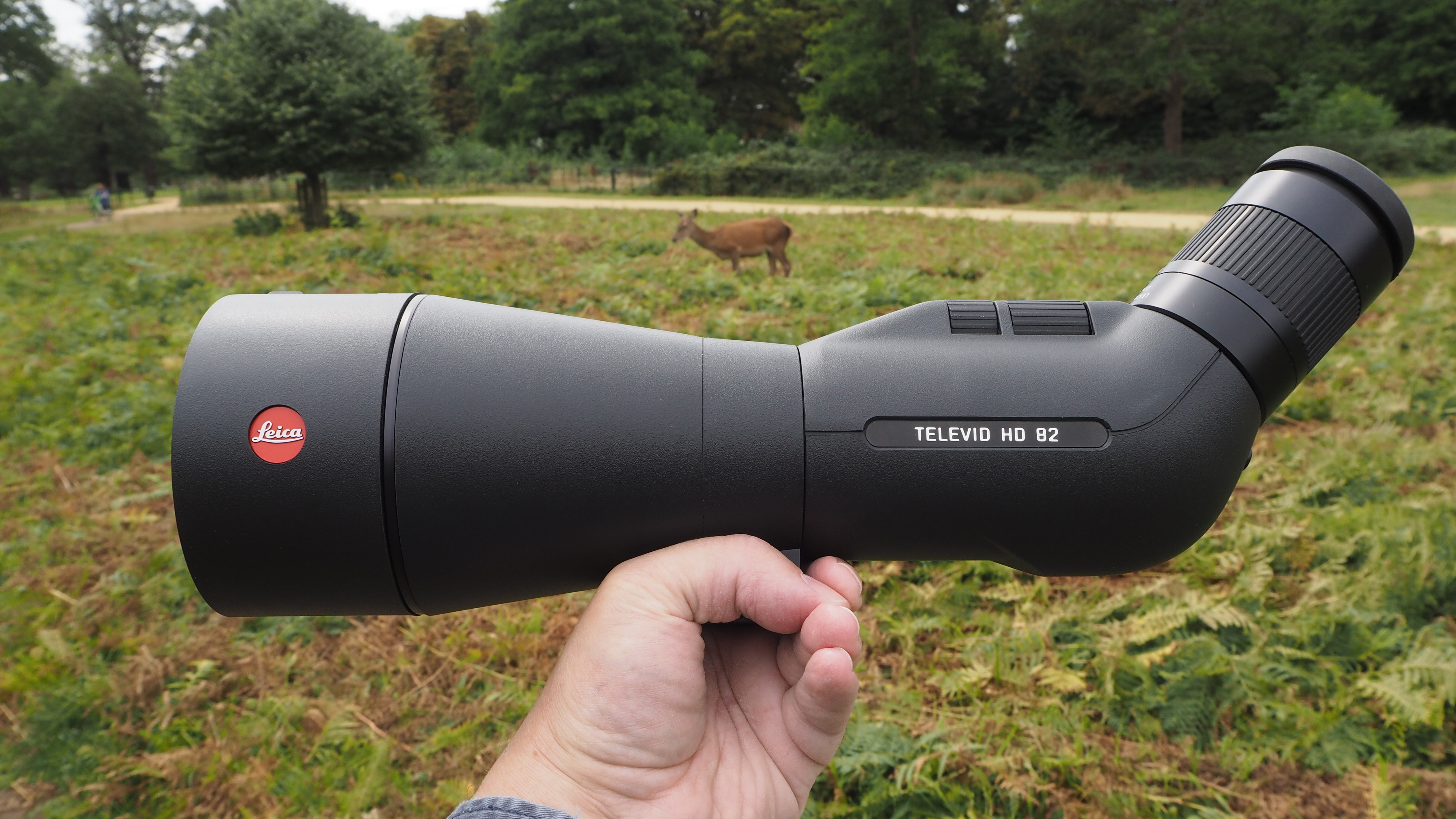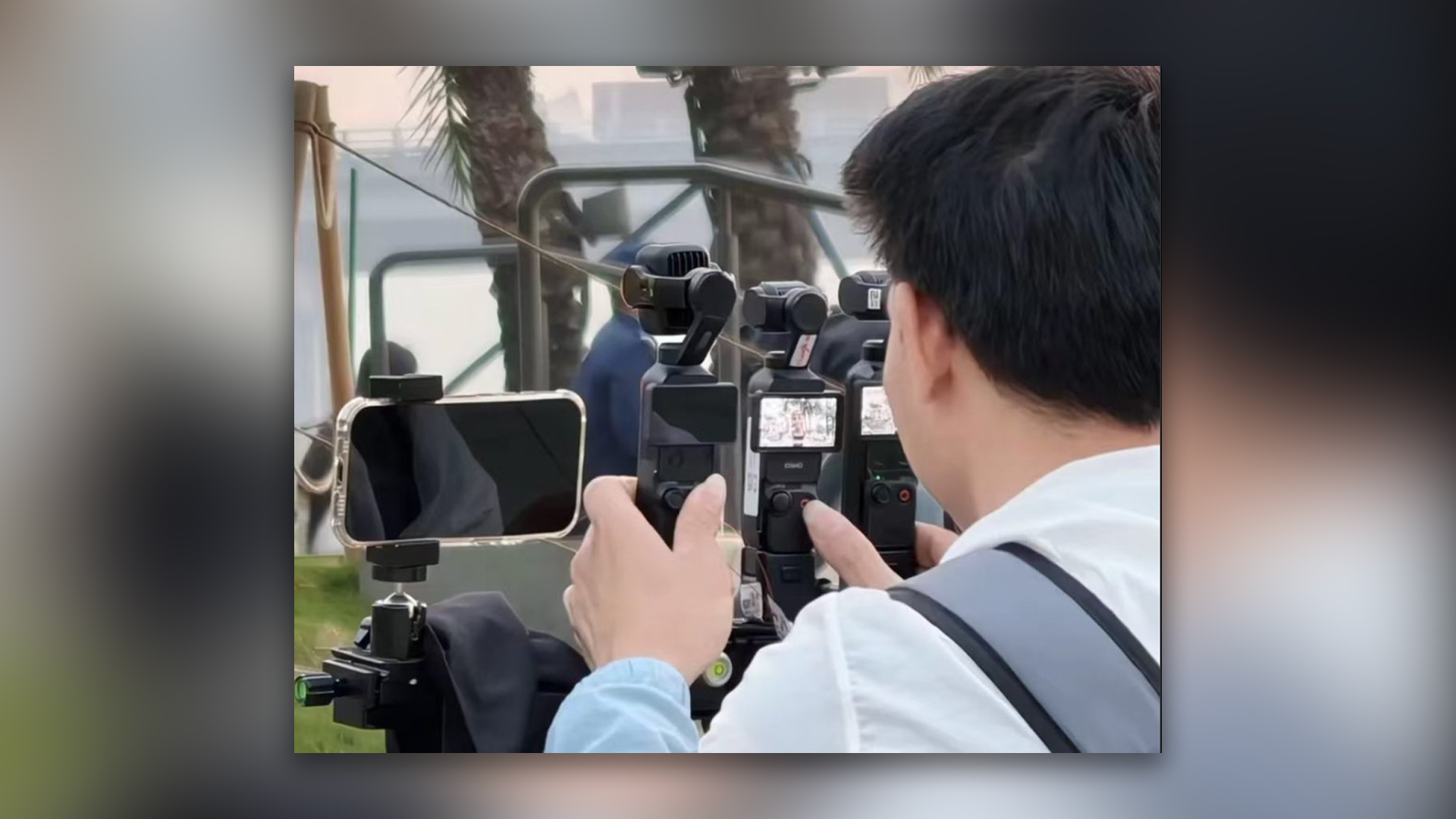The best spotting scopes in 2025: get a closer look at sports, nature, and wildlife
The best spotting scopes offer higher magnification than a monocular but much more portability than a telescope
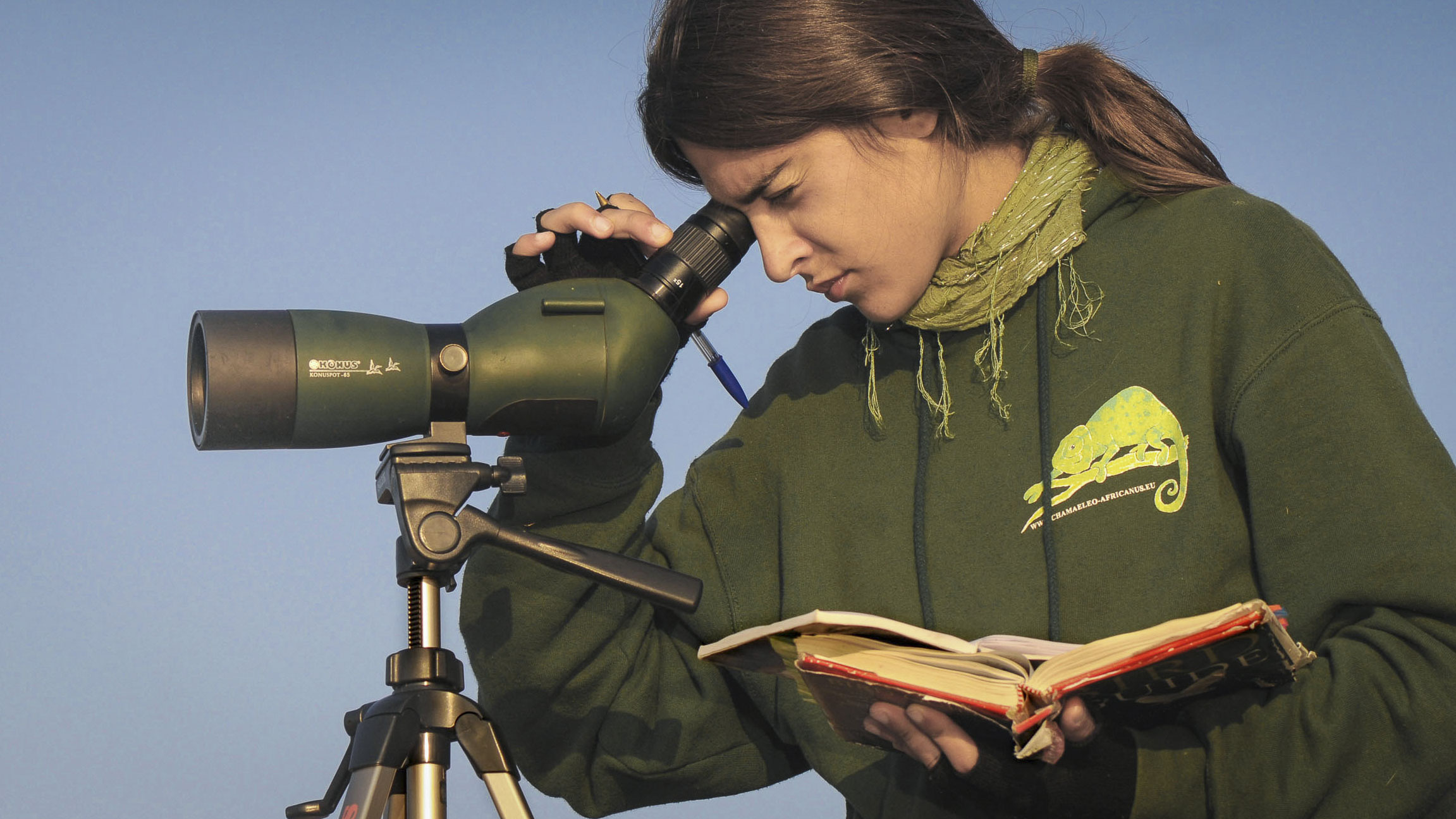
After years of trekking with spotting scopes slung over my shoulder – through tangled woodland, across windswept moorland, and along crumbling cliff edges – I’ve come to see them not just as kit, but as essential companions.
Whether you’re quietly scanning for red deer at dawn, watching distant regattas unfold, or tracing the craters of the moon, a good scope brings the world closer in a way that feels both intimate and astonishing.
Often also called field scopes, they offer magnification far beyond any of the best monoculars, yet remain compact enough to carry without fuss. While monoculars typically top out at 10x, a decent spotting scope stretches well beyond, often with a smooth zoom range, making them the tool of choice for birders, nature watchers, and digiscoping photographers alike. Just don’t expect to get away without a tripod, however steady your hands, as the power of a spotting scope demands a solid foundation.
There’s no shortage of options, from entry-level glass up to the exquisite optics that are priced for pros. Whether you're just starting or looking to upgrade, the world of spotting scopes is as broad as it is brilliant. This guide takes a closer look at the very best models across a range of budgets and needs.
The quick list
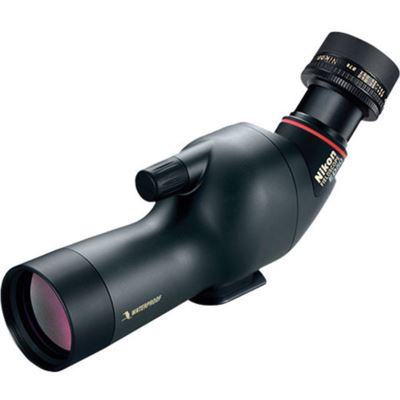
It’s no surprise that camera and optics manufacturer Nikon produces scopes with the ability to attach a camera and enjoy the art of digiscoping. Unlike with some other scopes, the eyepiece is sold separately.
Read more below
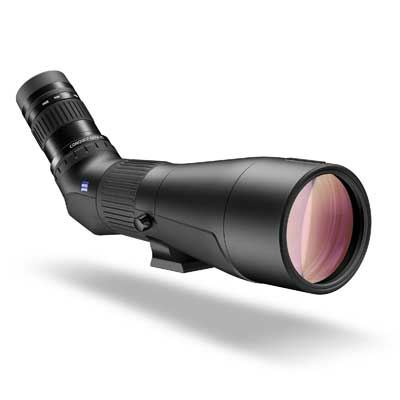
Any photographer will recognize the Zeiss name as the bee’s knees for optical quality, so selecting a Zeiss scope for wildlife and nature photography has got to be a sensible decision.
Read more below

The Leica APO-Televid 65 with a 25-50x zoom eyepiece offers bright, clear views and premium build quality in a compact, versatile spotting scope.
Read more below

This is a great mid-priced model for wildlife watchers. It comes kitted up with its own travel tripod and a mount for using the scope from your car.
Read more below
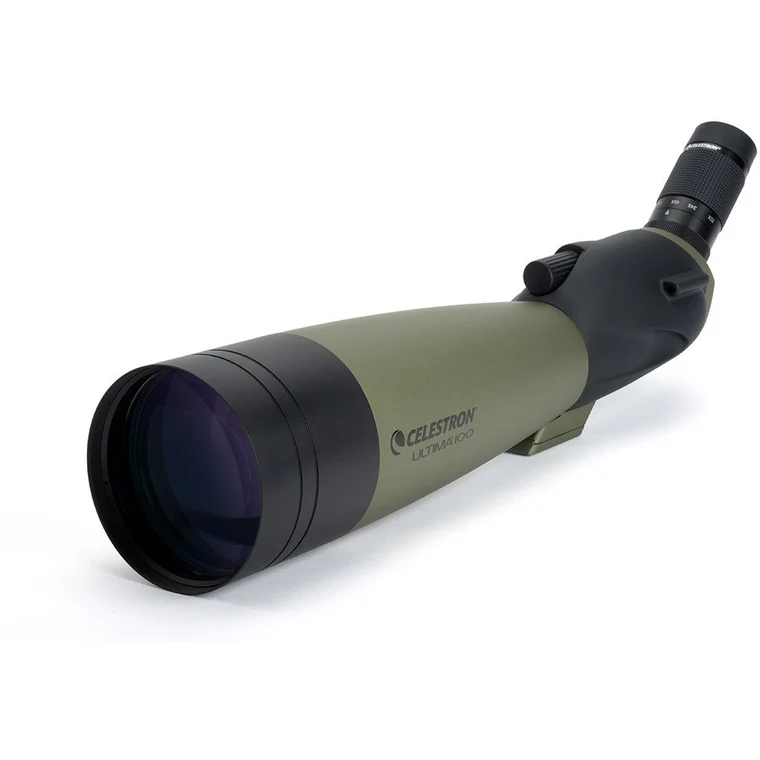
The Ultima 100 is a powerful 100mm scope, ideal for stargazing and wildlife viewing, with bright optics, a 45° viewing angle, and a 22-66x zoom eyepiece.
Read more below
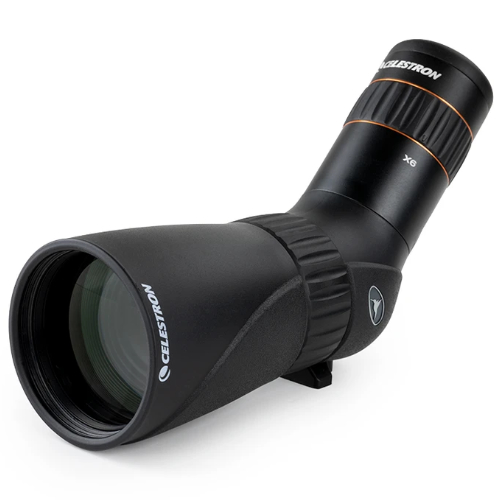
The Celestron Hummingbird 9-27x56 ED spotting scope is compact, lightweight (590g), and travel-friendly. Its 9x magnification works as a monocular, and it’s waterproof, nitrogen-filled, and adaptable to mounts.
Read more below
View the full list ⤵
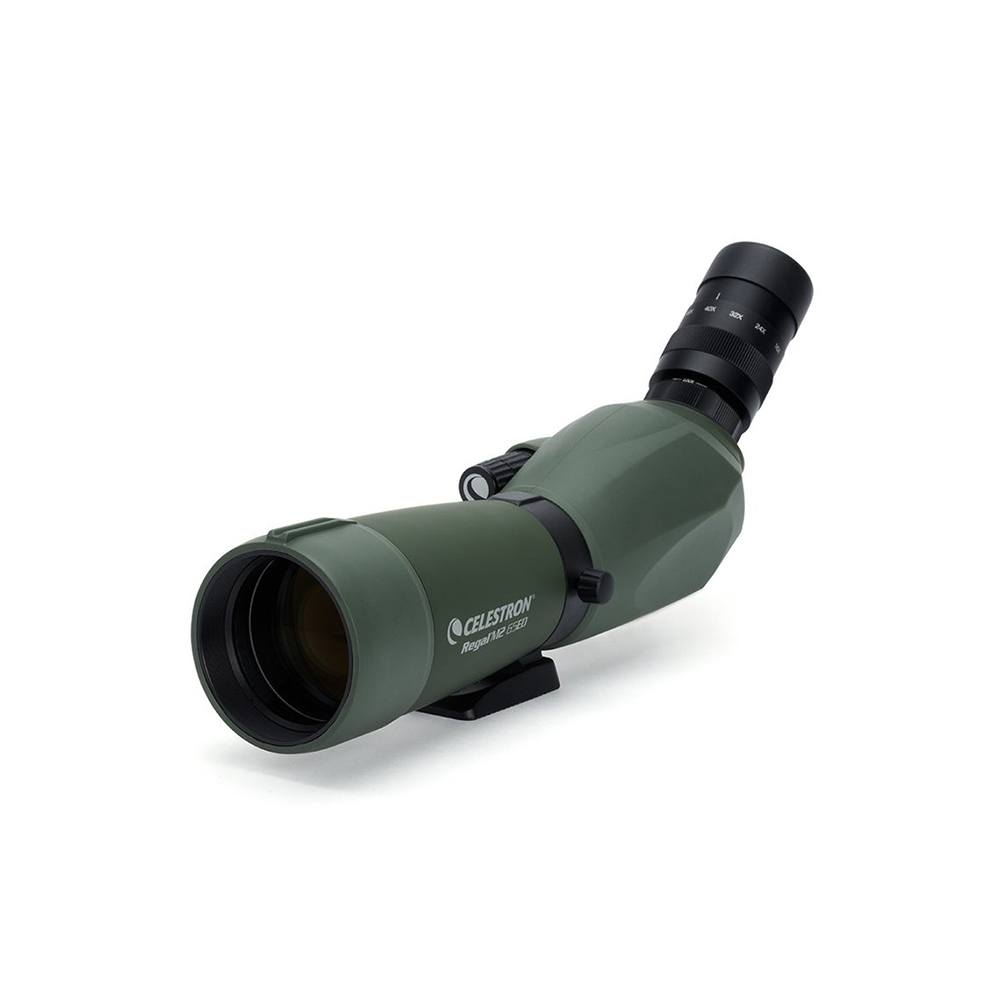
The Celestron Regal M2 65ED is a well-priced premium scope with ED glass, dual focus, and camera compatibility. It's ideal for everything from birding to stargazing, all in a lighter magnesium alloy body.
Read more below
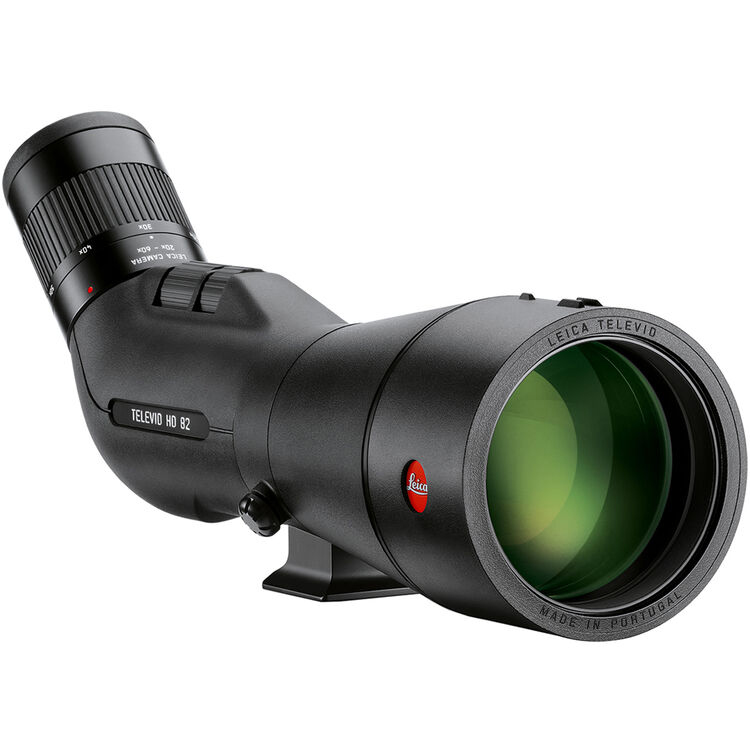
Pairing a bright 82mm objective lens with a 20-60x zoom eyepiece, this is a top-end scope that you'll need deep pockets for, and is just the job if only a Leica will do.
Read more below
The best spotting scopes in 2025
Why you can trust Digital Camera World
Best all-round spotting scope
Specifications
Reasons to buy
Reasons to avoid
✅ You want a reputable brand: Nikon’s optical expertise means reliable performance from a trusted manufacturer known for high-quality lenses and scope systems.
✅ You want a digiscoping option: Nikon's scope allows for camera attachment, making it easy to capture photos directly through the scope.
❌ You want a larger objective lens: While the 50mm lens is sufficient in good lighting, a larger lens provides better performance in low-light situations.
❌ You want enhanced waterproofing: The ED50 is waterproof up to a meter for five minutes, but some may require more substantial waterproof capabilities.
It’s no surprise that camera and optical manufacturer Nikon produces scopes with the ability to attach a camera and enjoy the art of digiscoping. Indeed, Nikon has its own digiscoping system.
There’s a lot of choice in this field, but the Nikon Fieldscope ED50 offers a 50mm objective lens (to which a 55mm filter can be attached if desired) and is both relatively compact and lightweight with it.
It also ticks the boxes for the regular must-haves, such as a fog-banishing nitrogen-filled construction and built-in waterproofing (it can even be submerged up to a meter for five minutes) for all those times when the weather doesn't play ball, along with a multilayered lens coating to ensure superb light transmission and, ultimately, high-resolution images.
Read our full Nikon Fieldscope ED50 review
Final thoughts
The Nikon Fieldscope ED50 is a compact, lightweight spotting scope that punches well above its weight. With impressive optical clarity, true-to-life color rendition, and a rugged, weather-sealed body, it’s an ideal choice for birders and wildlife enthusiasts who value portability without sacrificing image quality. It feels like a premium tool in the field, and Nikon’s trusted optics heritage really shines through. If you're looking for a travel-friendly scope that performs reliably in all conditions, the ED50 is well worth the investment.
Best spotting scope for image quality
Specifications
Reasons to buy
Reasons to avoid
✅ You want powerful magnification: The zoom range of up to 60x allows you to view distant subjects with great detail.
✅ You want high optical quality: Zeiss is known for its exceptional optics, making this a top choice for those who value clarity and precision.
❌ You want a more affordable option: Zeiss scopes, including the Conquest Gavia 85, are premium products with price tags to match.
❌ You want a more compact scope: The large 85mm lens and durable build make this relatively bulky, which might be a drawback if portability is a priority.
Any photographer will recognize the name Zeiss as being the bee’s knees for optical quality, so selecting a Zeiss scope for wildlife and nature photography has got to be a sensible decision.
Of course, Zeiss doesn’t come cheap, but the Zeiss Conquest Gavia 85 is versatile due to a rapid focus mechanism and a close near-focus setting, so even observing smaller objects or wildlife is claimed to be easier than ever.
Of course, you only have to look at the name of the product to see one great advantage – namely, a whopping 85mm-diameter objective lens, useful for low-light observation. Couple this with a zoom-magnification range of up to 60x and a fog-proof, nitrogen-filled construction, and you’ve really got something.
Read our full Zeiss Conquest Gavia 85 review
Final thoughts
The Zeiss Conquest Gavia 85 is a top-tier spotting scope that combines superb optical performance with a relatively lightweight and rugged design. Its 85mm HD lens and premium coatings deliver bright, sharp images with excellent contrast, even in low light, while the smooth, responsive focus ring makes fine adjustments easy in the field. Though it lacks a secondary fine focus knob, the Gavia 85 more than makes up for it with its clarity, build quality, and dependable performance. For those who want professional-grade viewing without venturing into ultra-premium territory, this is a seriously impressive scope that’s worth every penny.
Best premium option
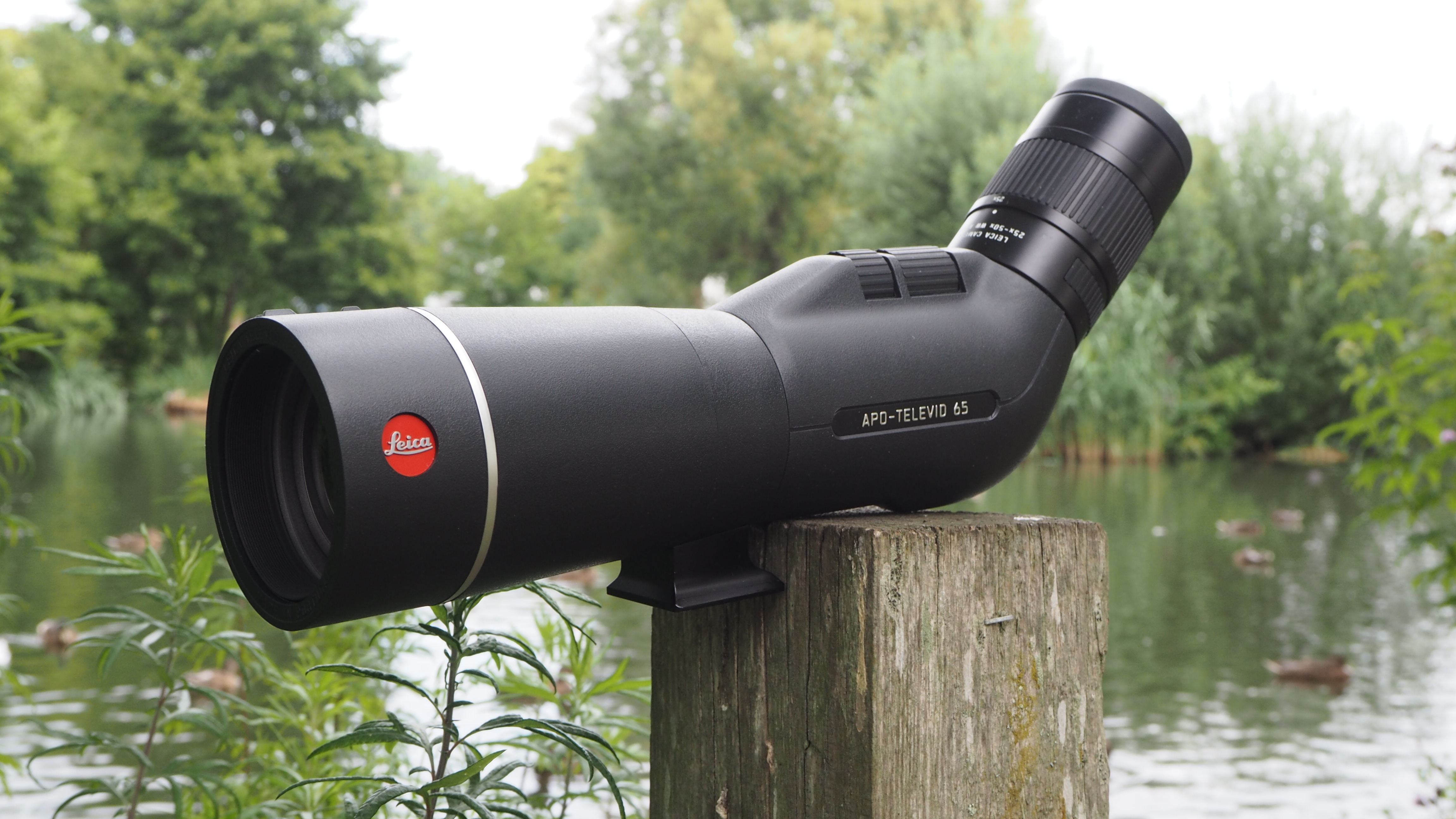
Specifications
✅ You want a versatile range: This covers everything from close observation to long-range detail, thanks to the 25-50x zoom.
✅ You want top quality: With excellent control over chromatic aberration, there's virtually no visible purple fringing even in high-contrast scenes.
❌ You want an included eyepiece: Combining the scope with the 25-50x eyepiece adds significantly to the total cost.
❌ You want a lighter, budget-friendly option: If portability and price outweigh the need for premium construction, look elsewhere.
The Leica APO-Televid 65, paired with the 25-50x WW ASPH zoom eyepiece, strikes a fine balance between portability and performance. Its 65mm objective lens delivers bright, detailed views, while the versatile 25 to 50x magnification range makes it well-suited for everything from birdwatching to long-distance landscape observation. The angled eyepiece design adds a welcome element of comfort, especially when tripod-mounted, allowing for relaxed viewing without the need to crouch or strain. Chromatic aberration is impressively well-controlled, with virtually no visible purple fringing, and the APO-Televid 65 holds its own as a high-performing scope that should provide many years of dependable service.
In terms of design, Leica has created a scope that is both practical and visually appealing. A large, grippy zoom ring on the eyepiece and dual focusing wheels make it quick to find your subject and then fine-tune the image with precision. The build is sleek yet robust, as you would expect from Leica, with the sort of refinement that inspires confidence in the field.
Performance is equally impressive, with focus and zoom controls that are deliberately firm, enabling smooth, incremental adjustments without overshooting your mark. Views through the scope are bright and clear, with natural colour rendition and strong contrast, delivering image quality that will satisfy most discerning users.
Value-wise, the APO-Televid 65 carries the premium price tag associated with Leica’s German engineering and meticulous construction. On paper, the body alone feels relatively well-priced for its class, but the dedicated zoom eyepiece is an essential component that pushes the overall investment higher. Even so, for those seeking a durable, versatile, and beautifully made scope, the package offers solid long-term value.
Read our full Leica APO-Televid 65 review
Final thoughts
The Leica APO-Televid 65 with 25-50x WW ASPH zoom eyepiece is a scope that blends versatility, comfort, and refined engineering into a package that’s built to last. It may not quite reach the optical extremes of the very best in the market, but its bright, clear views, robust construction, and user-friendly design make it a rewarding choice for serious enthusiasts. For those willing to invest in premium craftsmanship and long-term reliability, it’s a scope that will deliver years of satisfying performance.
Best spotting scope for beginners
Specifications
Reasons to buy
Reasons to avoid
✅ You want a mid-priced option: With quality features at a reasonable cost, this is a great choice for wildlife enthusiasts seeking performance without the price.
✅ You want reliable weatherproofing: An IPX7 waterproof rating and O-ring sealed optics provide solid protection, keeping the scope usable in inclement weather.
❌ You want better durability: Those who need a more rugged, shockproof construction for extreme outdoor use might look for a higher-end option.
❌ You want improved low-light performance: A larger objective lens might be preferred if you plan on using the scope in low-light environments.
This is a well-balanced mid-range spotting scope that delivers strong performance without pushing into premium price territory, making it a smart pick for wildlife watchers who want quality without going overboard. It’s supplied with a lightweight travel tripod for quick setup in the field, plus a handy car window mount that’s perfect for roadside observations, when pulling over is your only option. That added flexibility makes it a great companion whether you’re out in the woods or scanning across a nature reserve from your vehicle.
The 20-60x magnification range offers plenty of scope – quite literally – for tracking a wide variety of bird and animal species. Whether you’re watching a red kite wheeling overhead or trying to get a closer look at deer grazing in the distance, it’s up to the task. The 65mm objective lens might not rival the brightness of larger, heavier scopes, but for daytime use, it delivers crisp, clean detail that’s more than enough for most conditions.
Built to withstand the elements, this model features IPX7-rated waterproofing with fully O-ring sealed optics, so even in wet and unpredictable weather, you can rely on it to keep working without worry. It feels reassuringly durable and ready for real-world adventures, not just fair-weather outings.
If you’re after a dependable scope that blends performance, portability, and price into one very usable package, this is well worth a look.
Read our full Bushnell 20-60x65 Prime review
Final thoughts
The Bushnell Prime 20-60x65 is a rugged and reliable spotting scope that delivers solid performance at an accessible price. Its fully multi-coated optics and BAK4 prisms produce bright, contrast-rich images, while the EXO Barrier coating and waterproof, fog-proof construction ensure it stands up to the elements. Lightweight yet sturdy, it’s easy to carry and comes with a versatile tabletop tripod that doubles as a window mount. While it may not compete with high-end scopes in sharpness, it offers excellent value for casual birdwatchers and outdoor enthusiasts looking for dependable performance without the premium price tag.
Best spotting scope for astronomy
Specifications
Reasons to buy
Reasons to avoid
✅ You want powerful magnification: The 22-66x zoom eyepiece offers clear and detailed observation of wildlife or celestial objects from a distance.
✅ You want a large aperture: The 100mm diameter lens provides over 50% brighter images than smaller models, making it ideal for low-light viewing and stargazing.
❌ You want easy portability: The size and weight make it less ideal for users who prioritize portability and ease of packing for frequent travel or extended hikes.
❌ You want a lighter scope: At 2kg, this scope is one of the bulkiest in its class, which could be cumbersome for activities requiring mobility.
Weighing 2kg and sporting a 100mm diameter lens, this is one of the biggest and bulkiest scopes on my list, so it wouldn't be great for, say, action photography. But for more stationary pursuits like stargazing and watching wildlife from a distance, it's a great option.
The largest aperture scope in the Ultima line, it offers more than 50 percent brighter images than the 80mm version, so it's a better option for low-light shooting.
The 100mm refractor features a 45° viewing angle and offers excellent multi-coated optics packed into a portable and durable refractor design. It comes standard with an angled, 22-66x zoom eyepiece, and a soft carrying case is also included.
Read our full Celestron Ultima 100 review
Final thoughts
The Celestron Ultima 100 is a powerful spotting scope that delivers bright, sharp views thanks to its large 100mm objective lens and multi-coated optics. With a versatile 22–66x zoom range and angled design for comfortable viewing, it’s well-suited for birdwatching, nature observation, and long-range spotting. Its waterproof build adds durability, though its larger size makes it less travel-friendly. Still, for those who prioritize image quality and low-light performance on a budget, the Ultima 100 is a strong, affordable choice.
Best spotting scope for hiking & travel
Specifications
Reasons to buy
Reasons to avoid
✅ You want dual-purpose versatility: With 9x min magnification, this effectively offers both a spotting scope and a monocular in one compact device.
✅ You want digiscoping capability: The camera-adaptable design allows for digiscoping, making it a great choice for capturing nature photography.
❌ You want a handheld-friendly viewfinder: The angled viewfinder can be less ideal for handheld use, as it’s more comfortable for stationary viewing.
❌ You want higher magnification: While the 9-27x zoom is great for close to mid-range viewing, it lacks the reach of larger scopes if you're observing distant wildlife.
Like the hummingbird it takes its name from, the Celestron Hummingbird 9-27x56 ED spotting scope is small and mobile, with a very manageable weight of 590g. That means it’s also ideally suited to taking on your travels. It will fit into a roomy jacket pocket, a rucksack, or a shoulder bag, and can be stashed in carry-on luggage.
At its lowest 9x magnification level, it can even substitute for a monocular, giving you, in effect, two products in one, though the angled viewfinder may not be ideal for handheld spotting.
This device is waterproof and nitrogen-filled to prevent fogging, and is a tripod, monopod, and window-mount adaptable, giving it an extra degree of versatility. In summary, if you’re looking for a more portable alternative to a full-sized spotting scope, this ‘bird is hard to beat. What’s more, it’s also camera-adaptable for those into digiscoping.
Read our full Celestron Hummingbird 9-27x56mm review
Final thoughts
The Celestron Hummingbird 9-27x56mm ED Micro Spotting Scope is a compact, travel-friendly option that delivers surprisingly sharp and vibrant images for its size. Its ED glass and multi-coated optics perform well at lower magnifications, and the 9–27x zoom range makes it ideal for everything from birding to casual nature observation. While image quality can soften at full zoom, dropping the magnification slightly improves clarity. With a close focus distance of just three meters and a waterproof build, the Hummingbird is a smart choice for those wanting a lightweight, go-anywhere scope.
Best spotting scope for DSLR photography
Specifications
Reasons to buy
Reasons to avoid
✅ You want fast, precise focusing: The upgraded dual-focus mechanism brings subjects into focus up to two times faster.
✅ You want a premium, versatile scope: It's well-suited for various applications, from daytime birdwatching to nighttime stargazing.
❌ You want a fully included camera setup: Although the scope includes a T-adapter, you’ll need to purchase a compatible T-mount for your camera body.
❌ You want a more compact design: This premium scope may still be bulky for users who prioritize compactness and portability over advanced features.
The Celestron Regal M2 65ED is a premium spotting scope that is nevertheless fair value in its price range, offering suitability for everything from bird watching in the day to watching the heavens at night. Celestron claims that this second-generation unit has reduced the overall weight of the spotting scope by more than 14 percent, while still providing a rugged magnesium alloy body.
Further advantages include the fact that it has an upgraded dual-focus mechanism, which enables users to bring their subject into focus two times faster. You can factor in premium features such as Extra Low Dispersion (ED) glass as found in the best camera lenses. Speaking of which, DSLRs and mirrorless cameras can be attached to the Regal using the included T-adapter (although you will still need to buy a compatible T-mount for your specific camera body).
Read our full Celestron Regal M2 65ED review
Final thoughts
The Celestron Regal M2 65ED is a well-balanced spotting scope that offers excellent optical performance in a compact and durable build. Its ED glass and fully multi-coated lenses deliver crisp, color-accurate images, while the 16-48x zoom and dual-focus system make fine-tuning quick and precise. Housed in a lightweight magnesium alloy body that's waterproof and nitrogen-purged, it’s ready for any weather. For those wanting premium features without the premium price, the Regal M2 65ED is a standout option.
Best spotting scope for pros
Specifications
Reasons to buy
Reasons to avoid
✅ You want to use it at dusk and dawn: The bright 82mm lens makes it ideal for low light, offering a higher-powered alternative to a binocular or monocular.
✅ You want a reliable, long-lasting product: The tough, high-end build should last a lifetime of regular use.
❌ You want a balance between performance and value: This German design does not come cheap.
❌ You want a spotting scope for occasional use: The premium being charged here would be hard to justify for casual users.
The Leica Televid HD 82 spotting scope is a high-performance, slightly more affordable alternative to Leica’s flagship APO-Televid range. While it carries a premium price tag, it offers exceptional light-gathering capabilities and robust build quality, making it a formidable tool for wildlife observation, digiscoping, and amateur astronomy.
The scope features a large 82mm objective lens housed in a die-cast magnesium body. It is nitrogen-filled to prevent internal fogging and is waterproof up to five meters, ensuring durability in harsh weather. A standout design feature is the dual-focus system: one large dial for coarse adjustments and a smaller, adjacent dial for fine-tuning sharpness. Underneath its sleek, rubberized exterior, however, it is relatively heavy at 1,505g, making a sturdy tripod essential for stable viewing.
When paired with the 20-60x zoom eyepiece, the scope delivers bright, sharp images even in low-light conditions, such as dawn or dusk. However, this HD model lacks the specialized apochromatic (APO) glass found in Leica's pricier variants, leading to occasional purple fringing (chromatic aberration) in high-contrast scenes, such as dark branches against a bright sky. Additionally, while the clarity is high, I noticed a slight lack of contrast at the full 60x zoom.
Read our full Leica Televid HD 82 review
Final thoughts
The Televid HD 82 is a respectable and competent investment for those who prioritize maximum brightness over absolute color correction. It offers a more compact and elegant alternative to a traditional telescope while maintaining the prestigious Leica build quality. For users who can tolerate minor optical artifacts to save several hundred dollars compared to the APO range, it is a highly recommended, lifetime-investment tool for serious nature enthusiasts.
How to choose spotting scopes
Straight or angled body?
When selecting a spotting scope, one key decision is choosing between a straight or angled body design. Straight scopes have an eyepiece aligned with the body, allowing for a direct line of sight to your subject – ideal for quick targeting and tracking. In contrast, angled scopes provide greater comfort, especially when seated or lying down, as they minimize neck strain. The best choice depends on your intended use and viewing conditions.
What magnification do I need?
A spotting scope’s magnification is determined by its eyepiece, which, in some models, is interchangeable. This allows you to swap eyepieces and adjust magnification based on your needs. Many scopes come with a zoom eyepiece, enabling you to zoom in for a closer look when something catches your eye. A wider magnification range enhances versatility, making the scope suitable for observing a variety of subjects.
However, higher magnification also presents challenges. As magnification increases, the image may appear darker, and maintaining a steady view becomes more difficult. This often requires a sturdier, heavier tripod to ensure stability and clarity. Striking the right balance between magnification and usability is essential for getting the best performance from your spotting scope.
What size objective lens do I need?
The main body of the spotting scope determines image brightness. A larger objective lens gathers more light, producing a clearer, brighter image – especially in low-light conditions. However, this also increases the scope’s size, weight, and cost.
For a portable, all-purpose option, a lens diameter between 50-65mm offers a good balance of brightness and mobility. For maximum brightness, scopes with 100mm or larger lenses excel, making them ideal for stargazing or observing distant wildlife at high magnifications.
How we test spotting scopes
We test spotting scopes within the field on moving subjects and landmarks for our buying guides and look for a scope that combines magnification, good construction, and image clarity, which can be used and withstand a day's bird watching or wildlife spotting. Budget is also an indicator and within this guide, you will find spotting scopes to suit everyone's budget.
Read more:
The best binoculars
10 best monoculars
Best night vision goggles and binoculars
The best lenses for bird photography
The best telescopes for astrophotography
The best camera deals, reviews, product advice, and unmissable photography news, direct to your inbox!

For nearly two decades Sebastian's work has been published internationally. Originally specializing in Equestrianism, his visuals have been used by the leading names in the equestrian industry such as The Fédération Equestre Internationale (FEI), The Jockey Club, Horse & Hound, and many more for various advertising campaigns, books, and pre/post-event highlights.
He is a Fellow of the Royal Society of Arts, holds a Foundation Degree in Equitation Science, and holds a Master of Arts in Publishing. He is a member of Nikon NPS and has been a Nikon user since his film days using a Nikon F5. He saw the digital transition with Nikon's D series cameras and is still, to this day, the youngest member to be elected into BEWA, the British Equestrian Writers' Association.
He is familiar with and shows great interest in 35mm, medium, and large-format photography, using products by Leica, Phase One, Hasselblad, Alpa, and Sinar. Sebastian has also used many cinema cameras from Sony, RED, ARRI, and everything in between. He now spends his spare time using his trusted Leica M-E or Leica M2, shooting Street/Documentary photography as he sees it, usually in Black and White.
